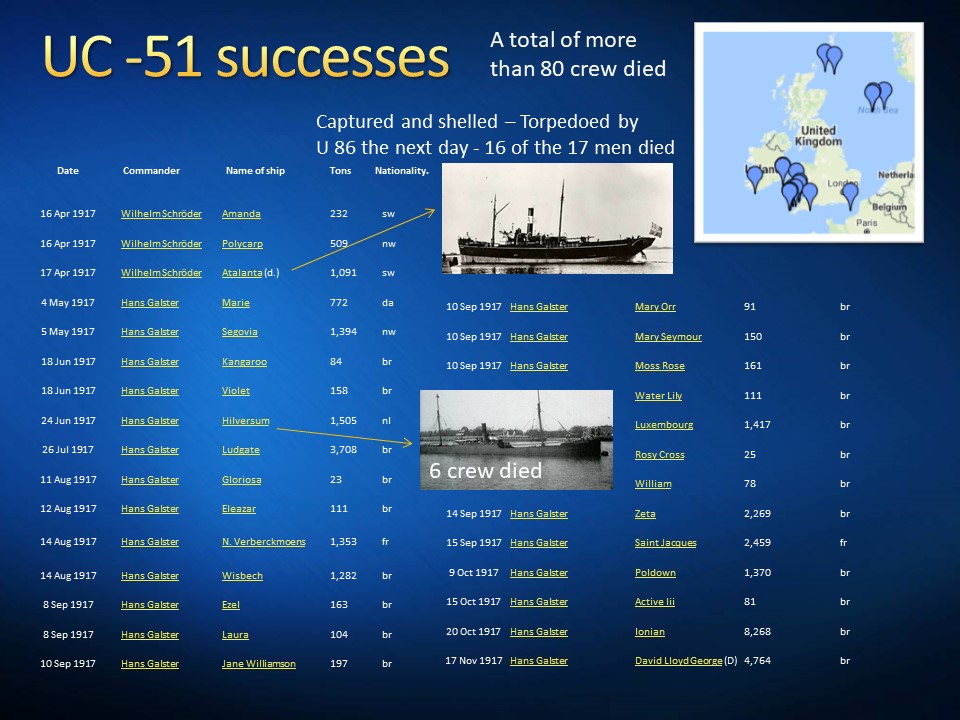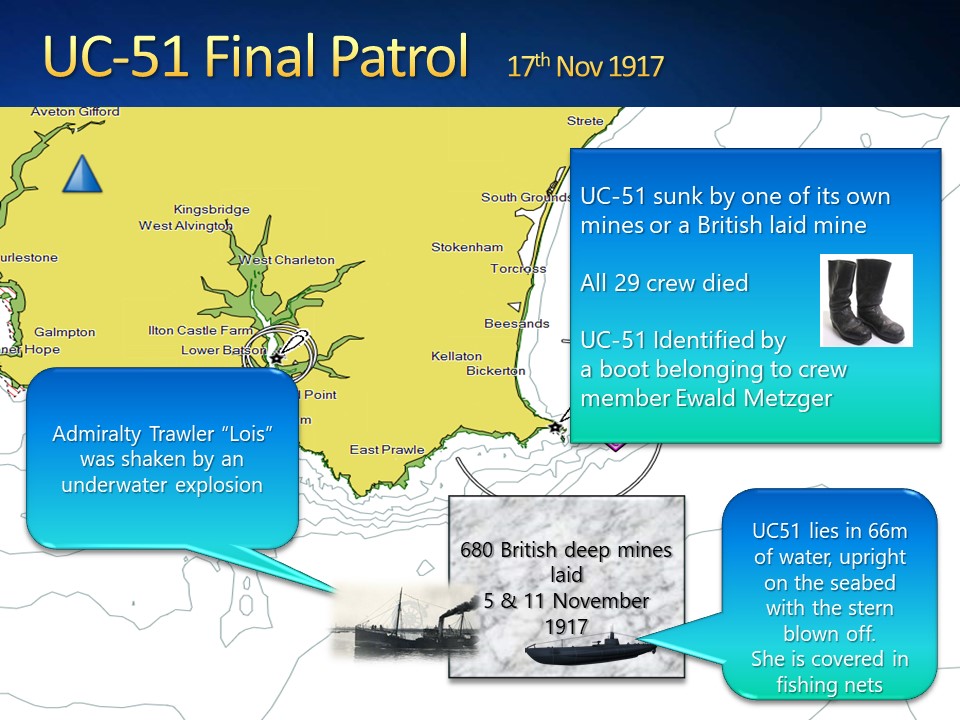UC-51 1917
N50 08.403 W03 41.533
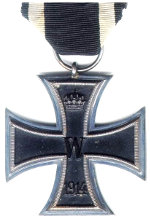
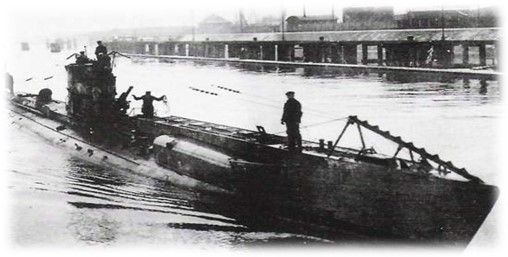
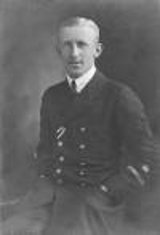
Her last commander Hans Galster
SM UC-51 was a German Type UC II minelaying submarine or U-boat in the German Imperial Navy (German: Kaiserliche Marine) during World War I. The U-boat was ordered on 20 November 1915 and was launched on 5 December 1916. She was commissioned into the German Imperial Navy on 6 January 1917 as SM UC-51. In seven patrols UC-51 was credited with sinking 28 ships, either by torpedo or by mines laid. UC-51 was mined and sunk in the English Channel on 17 November 1917. She was similar to UC 47 shown above.
The wreck was located and identified by marine archaeologist Innes McCartney close to the official sinking position in 2001.
UC-51 had a displacement of 434 tonnes (427 long tons) when at the surface and 511 tonnes (503 long tons) while submerged. She had a length overall of 52.69 m (172 ft 10 in), a beam of 5.22 m (17 ft 2 in), and a draught of 3.64 m (11 ft 11 in). The submarine was powered by two six-cylinder four-stroke diesel engines each producing 290–300 metric horsepower (210–220 kW; 290–300 shp) (a total of 580–600 metric horsepower (430–440 kW; 570–590 shp)), two electric motors producing 620 metric horsepower (460 kW – 610 hp), and two propeller shafts. She had a dive time of 48 seconds and was capable of operating at a depth of 50 metres (160 ft).
The submarine had a maximum surface speed of 11.8 knots (21.9 km/h – 13.6 mph) and a submerged speed of 7.2 knots (13.3 km/h – 8.3 mph). When submerged, she could operate for 56 nautical miles (104 km; 64 mi) at 4 knots (7.4 km/h – 4.6 mph); when surfaced, she could travel 8,820 to 9,450 nautical miles (16,330 to 17,500 km; 10,150 to 10,870 mi) at 7 knots (13 km/h – 8.1 mph). UC-51 was fitted with six 100 centimetres (39 in) mine tubes, eighteen UC 200 mines, three 50 centimetres (20 in) torpedo tubes (one on the stern and two on the bow), seven torpedoes, and one 8.8 cm (3.5 in) Uk L/30 deck gun. Her complement was twenty-six crew members.
